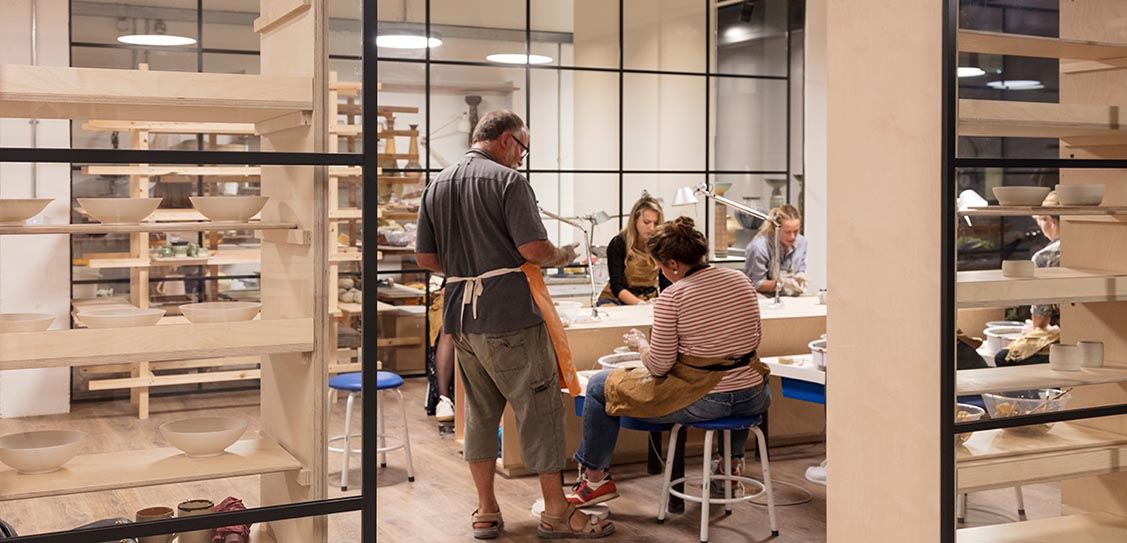Located within Eccleston Yards, Studio Pottery Director Lucy Atwood’s new studio is dedicated to the teaching and practising of wheel thrown ceramics, offering classes and events, and also includes a gallery space.
Four great display windows create an attractive, sunlit environment for the makers, showcasing temporary exhibits alongside works created by Gregory Tingay, the studio's Artistic Director and resident potter, while providing views into the teaching space. As night falls, the windows transform into a glowing showcase of creative activity with potters visible within.
FLINT has designed a 'landscape' of adjustable and mobile monolithic plinths, allowing the display area to accommodate a wide-range of ceramic types. The plinths are made from a range of different materials, such as metal, stone and timber, while screens reference a Japanese aesthetic, providing partial visibility through to the workshop behind. The generous windows are designed to intrigue passersby, encouraging them to engage in the pottery making process, this was one of FLINT’s key design concepts.
The creative collaboration between FLINT’s Associate Director Vesna Aksentijevic and Studio Pottery London found its origins in pottery making in a former North London studio which was predecessor and inspiration for this project. The different character and demands of the new studio shaped the relationship between architect and designer and client and artist in a dynamic process of conversation, shared ideas, creative vision and continuing dialogue. The common experience of working with clay and the desire to create a studio space with a particular atmosphere and look, informed the collaborative process, rooted as it was in friendship as well as a love of the process and history of studio pottery. Working with a previously empty unit, FLINT has sought to unify the various spaces in a subtle and cohesive way, adopting a minimal palette of materials such as plywood, glass and timber. This aesthetic provides a muted backdrop to complement the activity and processes of working with clay, creating a calm and inspiring environment.
FLINT’s design approach was to create a bespoke setting for the various ceramic processes taking place in an urban pottery studio. The studio is designed as a series of open spaces aimed at supporting the different ways in which potters work, from the practical stages of clay throwing, turning, drying, firing and glazing, to teaching and displaying ceramics. Generous circulation allows for the manoeuvring of equipment, moving pots to drying racks before firing, or moving pieces on throwing batts to storage shelves for continued work, while a glazing area has been created for use both by members and pupils; kiln firing is conducted under the supervision of a technician.
The entrance features a glazed vitrine showcasing ceramic works that leads visitors into the main multifunctional area. Centred around a library, this space can be configured for lectures and group workshops, while other sections are divided using delicate black-framed glass partitions and open plywood shelving. The construction of these partitions enables the space to maintain a sense of openness and light, while ensuring a degree of separation and privacy. FLINT used reclaimed and recycled pottery boards to design wall shelving specifically adapted to the needs of the studio.
The teaching workshop has been designed to accommodate an optimum number of pupils, with bespoke six wheel benches clustered in two class units, adaptable to allow for larger workshops when required. A separate studio for the resident potter provides a designated, private space where he can interact with members and students, and also create his own artworks.



